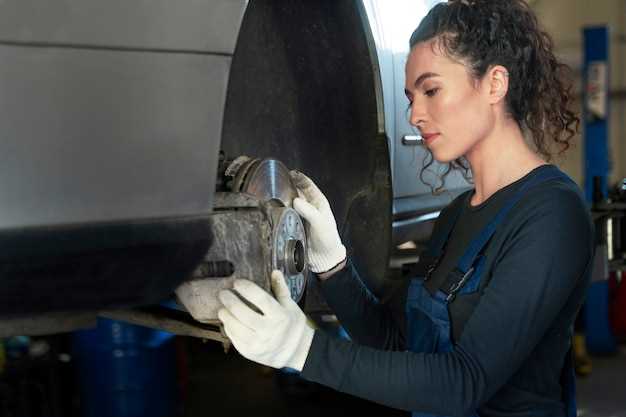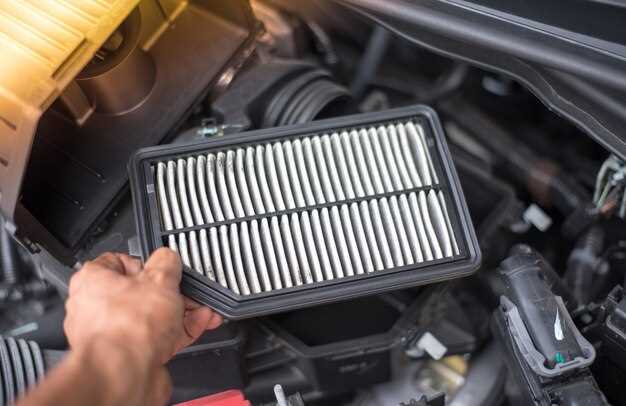Audi Air Filter Replacement – Step-by-Step Guide

Maintaining your Audi’s performance requires attention to detail, and one essential aspect is ensuring that the air filter is always in optimal condition. A clean air filter not only improves engine efficiency but also enhances fuel economy and reduces emissions. Regular replacement of the air filter is a straightforward diy task that every Audi owner can undertake, saving both time and money while keeping your vehicle in peak performance.
This guide will walk you through the steps necessary for replacing the air filter in your Audi, highlighting the tools you’ll need and the specific techniques applicable to various models. By engaging in this diy project, you can not only familiarize yourself with your vehicle’s engine compartment but also gain a sense of accomplishment from performing maintenance yourself.
From understanding the importance of the air filter’s role to recognizing the signs indicating when it should be replaced, this article will equip you with all the essential information you need for a successful replacement. Let’s dive into the details and ensure your Audi runs smoothly by keeping the air flowing efficiently!
Understanding the Importance of Your Audi’s Air Filter

The air filter in your Audi plays a crucial role in maintaining the overall performance and longevity of your vehicle. It serves as the first line of defense against dust, dirt, and other contaminants that can enter the engine. A clean air filter ensures that the air entering the engine is free from harmful particles, allowing for better combustion and improved fuel efficiency.
When the air filter is clogged or dirty, it restricts airflow, leading to reduced engine performance. This can result in sluggish acceleration, poor fuel economy, and increased emissions. Moreover, a compromised air filter can cause damage to internal components of the engine over time, leading to costly repairs.
Performing diy maintenance by regularly checking and replacing your Audi’s air filter is essential. It is recommended to inspect the air filter every 15,000 to 30,000 miles, depending on driving conditions. Changing the air filter is a simple process that can be accomplished with minimal tools, making it a viable task for any car owner looking to save on maintenance costs.
In conclusion, maintaining your Audi’s air filter is vital for optimal engine performance and efficiency. By ensuring that the air filter is clean and functioning properly, you not only enhance your vehicle’s performance but also extend its lifespan, making it a wise investment for any Audi owner.
Identifying the Right Air Filter for Your Audi Model
Choosing the correct air filter for your Audi is crucial for maintaining optimal engine performance and ensuring efficient airflow. Each Audi model has specific requirements based on its engine design and intended use. Here are essential steps to identify the appropriate air filter.
1. Consult Your Owner’s Manual: The most reliable source for finding the right air filter for your Audi is the owner’s manual. This document contains detailed specifications, including the part number and the recommended filter type.
2. Check Engine Specifications: Different engines require different air filters. It’s important to know whether your Audi has a naturally aspirated engine or a turbocharged variant, as this can influence the type of air filter needed. Turbocharged models may have specific filters optimized for enhanced airflow and particle filtration.
3. Filter Type: Audi vehicles may use various types of filters, such as paper, foam, or mesh. Typically, a high-quality pleated paper filter is recommended for most models, as it offers a good balance between airflow and filtration efficiency. Ensure that you choose a filter that meets or exceeds OEM standards.
4. OEM vs. Aftermarket Filters: Decide whether you prefer Original Equipment Manufacturer (OEM) parts or aftermarket alternatives. OEM filters are specifically designed for your vehicle, guaranteeing a precise fit and performance. Aftermarket filters may offer benefits such as enhanced filtration or better airflow but should be selected with care to ensure compatibility.
5. Verify Compatibility: Use online resources or contact your local Audi dealer to confirm compatibility. Inputting your vehicle identification number (VIN) can help in sourcing the correct air filter for your specific model and year.
6. Regular Maintenance: Lastly, remember that regularly replacing your air filter is vital for long-term vehicle performance. Follow the manufacturer’s recommendation for replacement intervals, usually between 15,000 to 30,000 miles, depending on driving conditions.
By adhering to these guidelines, you can ensure that your Audi remains in peak operating condition with the right air filter in place.
Step-by-Step Instructions for DIY Air Filter Replacement

Replacing the air filter in your Audi is a straightforward process that can enhance your vehicle’s performance. Follow these detailed steps for a successful DIY air filter replacement.
- Gather Necessary Tools and Materials:
- New air filter
- Screwdriver (if necessary)
- Shop vacuum or cloth (optional for cleaning)
- Prepare Your Vehicle:
- Park your Audi on a flat surface and turn off the ignition.
- Open the hood and secure it with the prop rod.
- Locate the Air Filter Housing:
- Identify the air filter housing, typically situated near the engine.
- Consult your owner’s manual if you are unsure about its location.
- Remove the Air Filter Housing Cover:
- Loosen any clips or screws securing the cover.
- Carefully lift the cover off, ensuring not to damage any components.
- Take Out the Old Air Filter:
- Remove the old air filter from the housing.
- Inspect the housing for debris or dirt.
- Use a shop vacuum or cloth to clean the interior of the housing if needed.
- Install the New Air Filter:
- Position the new air filter into the housing, ensuring a snug fit.
- Make sure it is oriented the same way as the old filter for proper airflow.
- Reattach the Air Filter Housing Cover:
- Place the cover back onto the housing.
- Secure it with clips or screws that you previously removed.
- Close the Hood:
- Ensure that everything is in place and close the hood securely.
- Test Your Vehicle:
- Start your Audi and listen for any unusual noises.
- Check for improved airflow and engine performance.
Following these steps will help you effectively replace the air filter in your Audi, promoting better engine performance and efficiency. Regular replacement of the air filter is crucial for optimal vehicle maintenance.
Common Tools Needed for Changing Your Audi’s Air Filter
When undertaking the DIY task of changing your Audi’s air filter, having the right tools is essential for a smooth process. Below is a list of common tools that you will need to successfully replace your vehicle’s air filter.
First, you will need a socket set or a wrench set. These tools are essential for loosening or removing any screws and bolts that may secure the air filter compartment. Make sure to have both metric and standard sizes on hand, as Audi models may vary.
A flathead and Phillips screwdriver are also important. Some air filter covers may be held in place with screws that require these screwdrivers. Having both types ensures that you can tackle any fastener you encounter.
Additionally, a pair of pliers can be beneficial. They may help to grip and pull components or clamps that may be difficult to remove by hand. This is particularly useful if any clips are stuck or hard to maneuver.
You should also consider having a soft cloth or shop towel available. This can help you clean the surrounding area before and after replacing the air filter. Keeping the vicinity clean prevents dirt from entering your engine during the process.
Finally, a replacement air filter specific to your Audi’s make and model is crucial. Ensure you have the correct filter on hand to avoid any delays during the DIY process. Having these tools ready will facilitate an efficient and straightforward air filter replacement, contributing to your vehicle’s optimal performance.
Signs That Your Audi’s Air Filter Needs Replacement
One of the first indicators that your Audi’s air filter requires replacement is a decline in engine performance. If you notice a decrease in acceleration or power, this could be a result of restricted airflow due to a clogged filter. Monitoring the throttle response can help you identify this issue.
Another sign is a decrease in fuel efficiency. An air filter that is dirty or blocked prevents the optimal mix of air and fuel from reaching the engine, leading to increased fuel consumption. If you find yourself refueling more often without any other changes in driving habits, a filter replacement might be necessary.
Pay attention to unusual engine sounds as well. A failing air filter can cause the engine to produce abnormal noises, such as popping or sputtering, due to the improper air-fuel mixture. If you hear any strange sounds, it’s worth considering a DIY inspection of the air filter.
Check for the presence of black exhaust smoke when driving. Excessive fuel combustion can occur if the air filter is dirty, resulting in black smoke coming from your exhaust. This indicates that the engine is not receiving sufficient air for complete combustion and could point to a needed replacement.
Finally, a visual inspection can reveal whether the air filter needs to be changed. If the filter appears visibly dirty, discolored, or damaged, it’s time to replace it. Regularly checking the air filter as part of your maintenance routine will ensure that your Audi continues to operate efficiently.
Tips for Maintaining Your Audi’s Air Filter for Longevity
Proper maintenance of your Audi’s air filter is essential for ensuring optimal engine performance and longevity. A clean air filter allows for better air circulation, which contributes to increased fuel efficiency and reduced emissions. Here are some practical DIY tips to maintain your Audi’s air filter effectively:
| Tip | Description |
|---|---|
| Regular Inspection | Check your air filter every 10,000 miles or during regular service intervals. Look for visible dirt and debris accumulation. |
| Cleaning | If your filter is reusable, clean it using compressed air or a mild vacuum. Avoid water and harsh chemicals to prevent damaging the filter media. |
| Replacement Schedule | Replace disposable air filters as recommended by your vehicle’s owner manual. Generally, replacement is advised every 15,000 to 30,000 miles. |
| Use Quality Filters | Opt for high-performance air filters that meet Audi’s specifications. Quality filters enhance engine protection and performance. |
| Monitor Driving Conditions | If you frequently drive in dusty or harsh environments, consider checking your air filter more often to ensure it remains clean. |
| Seal Integrity | Regularly inspect the air filter housing and seals for any signs of damage or wear. Ensure they are tight and properly functioning to keep contaminants out. |
Maintaining your Audi’s air filter can lead to better performance and fuel efficiency. By following these tips, you can enhance the lifespan of your air filter and support the overall health of your vehicle’s engine.




